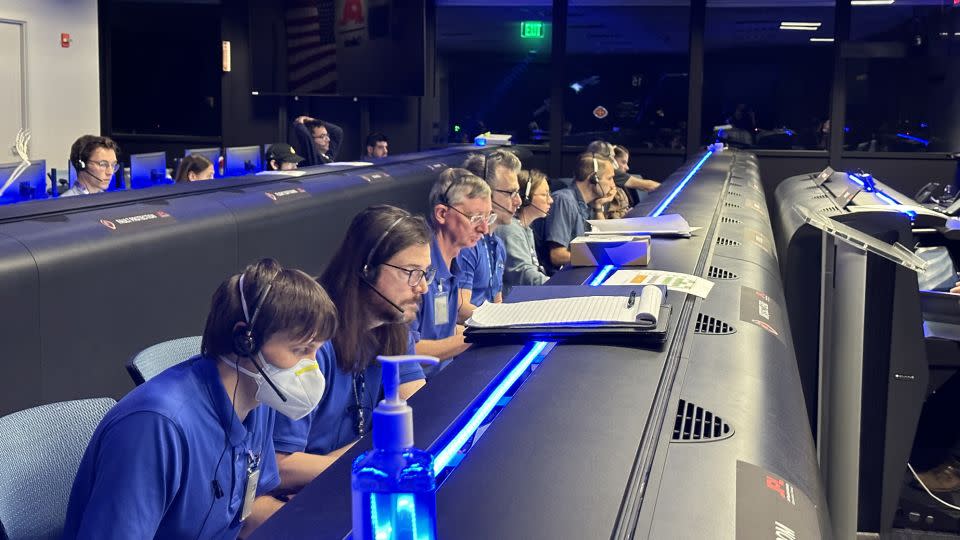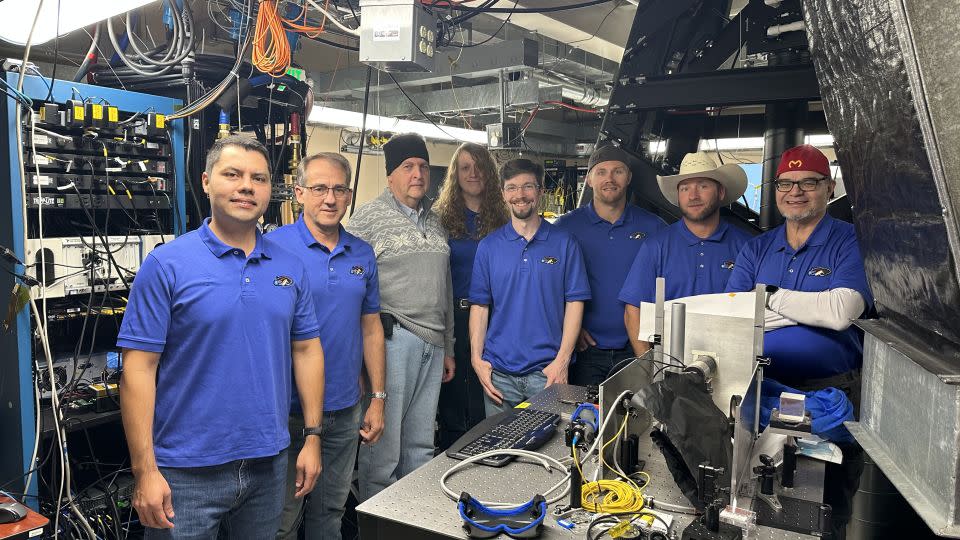Subscribe to CNN’s Wonder Theory science newsletter. Explore the universe with news about fascinating discoveries, scientific breakthroughs and more.
A groundbreaking experiment aboard NASA’s Psyche mission has just reached its first major milestone by successfully performing the most distant demonstration of laser communications. The technology demonstration could one day help NASA missions delve deeper into space and uncover more discoveries about the origin of the universe.
Launched in mid-October, Psyche is currently on track to capture humanity’s first glimpse of a metallic asteroid between the orbits of Mars and Jupiter. The spacecraft will spend the next six years traveling about 3.6 billion kilometers (2.2 billion miles) to reach its namesake, located on the outer part of the main asteroid belt.
Along the journey is the Deep Space Optical Communications, or DSOC, technology demonstration, which is carrying out a mission of its own during the first two years of the journey.
The technology demonstration was designed to be the U.S. space agency’s most distant high-bandwidth laser communications experiment, testing sending and receiving data to and from Earth using an invisible near-infrared laser. The laser can send data at 10 to 100 times the speed of traditional radio wave systems used by NASA on other missions. If successful in the coming years, this experiment could be the future basis of technology used to communicate with humans exploring Mars.
And DSOC recently achieved what engineers called “first light,” the feat of successfully sending and receiving its first data.
The experiment for the first time emitted a laser encoded with data from far beyond the Moon. Data from the test was sent from nearly 16 million kilometers (10 million miles) away and arrived at the Hale Telescope at the California Institute of Technology’s Palomar Observatory in Pasadena, California.

The distance between DSOC and Hale was approximately 40 times greater than the distance between the Moon and Earth.
“Achieving first light is one of many critical DSOC milestones in the coming months, paving the way to higher data rate communications capable of delivering scientific information, high-definition images and streaming video in support of the next great leap of humanity: sending humans to Mars,” Trudy Kortes, director of technology demonstrations for NASA’s Space Technology Mission Directorate, said in a statement.
Sending lasers through space
The first light, which occurred on November 14, occurred when the flight laser transceiver instrument on Psyche received a laser beacon sent from the Optical Communications Telescope Laboratory at NASA’s Jet Propulsion Laboratory’s Table Mountain facility near of Wrightwood, California.
The initial beacon received by Psyche’s transceiver helped the instrument aim its laser to send data to the Hale Telescope, which is located about 100 miles (160 kilometers) south of Table Mountain.
“The (Nov. 14) test was the first to fully incorporate ground assets and the flight transceiver, requiring the DSOC and Psyche operations teams to work together,” said Meera Srinivasan, DSOC operations leader at JPL, located in Pasadena, California. in a sentence. “It was a formidable challenge and we have a lot more work to do, but for a short time we were able to transmit, receive and decode some data.”


It is not the first time that laser communications have been tested in space. The first test of two-way laser communication occurred in December 2021, when NASA’s Laser Communications Relay Demonstration launched and entered orbit about 22,000 miles (35,406 kilometers) from Earth.
Since then, experiments have sent optical communications from low Earth orbit to the Moon. And the Artemis II spacecraft will use laser communications to return high-definition video of a manned trip around the moon. But DSOC marks the first time laser communications have been sent through deep space, requiring incredibly precise aiming and aiming out to millions of miles.
The initial testing of the technical demonstration’s capabilities will allow the team to work to refine the systems used in laser pointing precision. Once the team has checked that box, DSOC will be ready to send and receive data to the Hale Telescope as the spacecraft moves further from Earth.
Future challenges
While DSOC won’t actually send scientific data collected by the Psyche spacecraft because it’s an experiment, the laser will be used to send bits of test data encoded in the laser’s photons, or quantum light particles.
Detector arrays on Earth can pick up Psyche’s signal and extract the data from the photons. This type of optical communication could change the way NASA sends and receives data from its deep space missions.
“Optical communication is a boon for scientists and researchers who always want more from their space missions and will enable human exploration of deep space,” said Dr. Jason Mitchell, director of the Advanced Communications and Navigation Technologies Division within NASA’s Space Communications and Navigation Division. program, in a statement. “More data means more discoveries.”
As Psyche continues her journey, more challenges await her.
The DSOC team will monitor how long it takes for laser messages to travel through space. During first light, the laser took only 50 seconds to travel from Psyche to Earth. At the farthest distance between the spacecraft and Earth, the laser is expected to take 20 minutes to travel in one direction. And during that time, the spacecraft will continue to move and the Earth will rotate.
Meanwhile, the Psyche spacecraft continues to prepare for its primary mission, firing up propulsion systems and testing the scientific instruments it will need to study the asteroid when it arrives in July 2029. The mission could determine whether the asteroid is the exposed core of one of The first planetary building block since the beginning of the solar system.
For more CNN news and newsletters, create an account at CNN.com